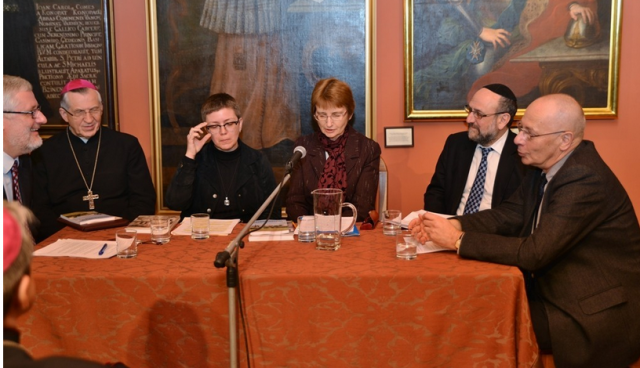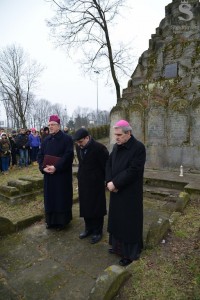Symposium in Poland Encourages Jewish-Christian Dialogue

Historians will tell you that the past can often have a direct and profound effect on the present age.
Take Magda Teter, for example. A scholarly probe into post-Reformation Europe recently led the professor of history and director of Jewish Studies at Wesleyan to an event that may have changed the course of Jewish and Christian relations in Poland.
“This is how scholars can sometimes play a role in getting people to talk to each other,” she said. “It didn’t start that way, but that was the good result.”
Sandomierz, a sleepy Renaissance town in southeast Poland, (now known in Europe as the backdrop for a popular TV show about a crime-solving priest) was for many years considered a locus of anti-Semitism. The reason: a painting in the city’s cathedral church depicting the “blood libel” of Jews murdering Christian children. One of a series commemorating Catholic martyrs, it had been for many years covered up; calls to have it removed met with opposition, but it was the source of intense controversy and a big problem for the local bishop.
In the course of researching a book she is currently writing, Teter met with the Sandomierz bishop. They discussed what to do with the 18th-century painting, and how to bring the community together around a solution?
The result of that conversation was a 2013 symposium on the issue, partially sponsored by Wesleyan, that brought together scholars and clerics and led to the decision to unveil the painting, add explanatory signage and convene again.

In January this year, that second meeting came as the Polish church’s national Day of Judaism was held in Sandomierz, with Teter, other scholars, Catholic clerics, the chief rabbi of Poland and lay leaders. Teter described a moving moment in the cathedral when a choir of Catholic seminarians sang the popular Israeli song Hevenu shalom aleikhem (We brought peace).
The Day of Judaism, which has been observed since 1997 by the Catholic Church in Poland, is mean to foster a dialogue with the Jewish community and “to present anti-Semitism as a sin.”
This year, the day capped a week of events, including an exhibition of Judaica in a local museum and events organized by local high school students about the history of Jews in Poland and Sandomierz.
Teter’s research led her to find deep similarities between the events depicted in the Sandomierz painting (and similar ones in nearby St. Paul’s) and depictions of the legendary martyrdom of Simon of Trent. When she exposed these similarities at the 2013 conference “You could hear people breathe, like ‘a-ha,” she said at a faculty lunch Feb. 11.
For years many had believed that the paintings, however nonhistorical, had portrayed events in Sandomierz. That they could be linked to a larger, non-local story “gave people the space” to talk about the Christian-Jewish rift, and the problem of the painting itself, in a new way. “Without polemics,” Teter said.
Teter’s journey to Sandomierz had started as she pursued access to Church archives while researching the 18th –century priest who brought the paintings to the cathedral. That scholarly journey hasn’t ended yet; she has yet to see the documents she originally sought.
“That may be the next step,” she said.

